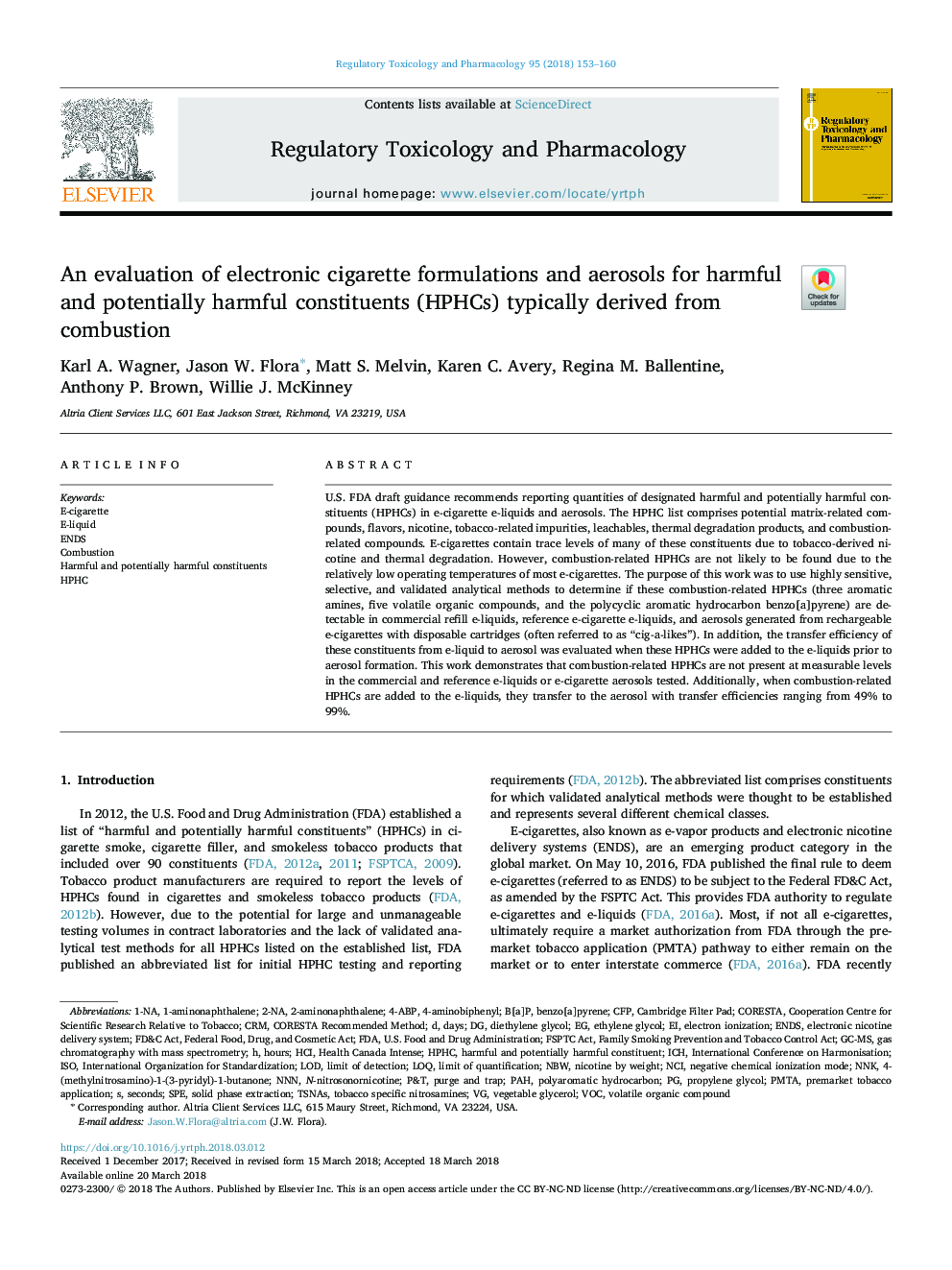| Article ID | Journal | Published Year | Pages | File Type |
|---|---|---|---|---|
| 8551324 | Regulatory Toxicology and Pharmacology | 2018 | 8 Pages |
Abstract
U.S. FDA draft guidance recommends reporting quantities of designated harmful and potentially harmful constituents (HPHCs) in e-cigarette e-liquids and aerosols. The HPHC list comprises potential matrix-related compounds, flavors, nicotine, tobacco-related impurities, leachables, thermal degradation products, and combustion-related compounds. E-cigarettes contain trace levels of many of these constituents due to tobacco-derived nicotine and thermal degradation. However, combustion-related HPHCs are not likely to be found due to the relatively low operating temperatures of most e-cigarettes. The purpose of this work was to use highly sensitive, selective, and validated analytical methods to determine if these combustion-related HPHCs (three aromatic amines, five volatile organic compounds, and the polycyclic aromatic hydrocarbon benzo[a]pyrene) are detectable in commercial refill e-liquids, reference e-cigarette e-liquids, and aerosols generated from rechargeable e-cigarettes with disposable cartridges (often referred to as “cig-a-likes”). In addition, the transfer efficiency of these constituents from e-liquid to aerosol was evaluated when these HPHCs were added to the e-liquids prior to aerosol formation. This work demonstrates that combustion-related HPHCs are not present at measurable levels in the commercial and reference e-liquids or e-cigarette aerosols tested. Additionally, when combustion-related HPHCs are added to the e-liquids, they transfer to the aerosol with transfer efficiencies ranging from 49% to 99%.
Keywords
TSNAsNNKNBWP&TENDSNNNN-nitrosonornicotine2-NAe-liquidCRMCFPHCIFDASPEHPHCCambridge filter padVOCNCILOQPAH4-ABPGC-MS4-(methylnitrosamino)-1-(3-pyridyl)-1-butanone4-aminobiphenylB[a]PEthylene glycolCombustionU.S. Food and Drug AdministrationSolid phase extractionISOBenzo[a]pyreneHealth Canada IntenseVolatile organic compoundPurge and trapTobacco specific nitrosaminessecondsLOD یا Limit of detectiondiethylene glycoldaysInternational Organization for StandardizationhoursElectronic nicotine delivery systemE-cigaretteFederal Food, Drug, and Cosmetic Actlimit of quantificationlimit of detectionCooperation Centre for Scientific Research Relative to TobaccoICHharmful and potentially harmful constituentsHarmful and potentially harmful constituentPolyaromatic hydrocarbonPropylene glycolgas chromatography with mass spectrometryInternational Conference on HarmonisationCORESTAelectron ionization
Related Topics
Life Sciences
Environmental Science
Health, Toxicology and Mutagenesis
Authors
Karl A. Wagner, Jason W. Flora, Matt S. Melvin, Karen C. Avery, Regina M. Ballentine, Anthony P. Brown, Willie J. McKinney,
